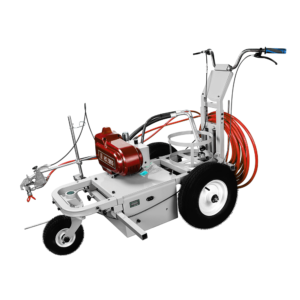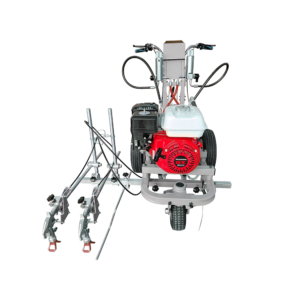Description
Using an airless mortar sprayer eliminates the need for compressed air when applying thick coats like plaster, stucco, or mortar. Because mortar components are heavy and have a high viscosity, these sprayers are made to handle them. An extensive rundown of airless mortar sprayers is provided below:
Workings of an Airless Mortar Sprayer:
- High-Pressure Pump Airless: mortar sprayers function similarly to paint sprayers, using a high-pressure pump to force mortar through the system.
- Hose: A reinforced hose that can withstand the high pressure and viscosity of the mortar is used to transport it.
- Spray Gun and Nozzle: To create a spray pattern appropriate for the application, the mortar is driven via a nozzle that has been specially built to handle thicker materials.
Benefits
- Efficiency: They can cover huge areas fast, which saves money and labour time.
- Even and Consistent Application: Using traditional hand troweling makes it challenging to accomplish an even and consistent application.
- Versatility: Suitable for plaster, stucco, cementitious coatings, and other mortar applications.
- Labour Reduction: By reducing the requirement for manual application procedures, workers’ physical strain is lessened.
Negative aspects
- Overspray: Much like paint sprayers, overspray can occur, wasting materials and creating a mess.
- Skill Requirement: To guarantee consistent coverage and prevent problems like clumping or uneven thickness, proper skill and experience are required.
- Cleaning & Maintenance: To keep the mortar from hardening in the system and creating clogs and damage, the system must be thoroughly cleaned after every usage.
Applications
- Plastering and Stucco: Perfect for plastering and stuccoing walls and ceilings.
- Cementitious Coatings: Used to coat concrete surfaces in decorative and protective layers.
- Masonry Work: Suitable for laying stone, bricks, and mortar.
- Restore Work: Helps to swiftly and effectively patch up and restore damaged surfaces.
Types of Handheld Airless Mortar Sprayers:
- Handheld Models: Ideal for touch-ups and smaller jobs.
- Models that are Cart- or Stand-Mounted: larger units with more power and capacity that are intended for large-scale applications.
- Gas-powered or electric-powered: Gas-powered devices offer greater mobility and power for outdoor or large-scale applications, while electric ones are quieter and better suited for inside use.
How to Use an Airless Mortar Sprayer
- Select the Appropriate Nozzle: Make sure the nozzle is suitable for the application and kind of mortar.
- Mix Correctly: To prevent clogs and guarantee a smooth application, make sure the mortar is mixed to the proper consistency.
- Test Spray: Before beginning the main application, test the spray pattern and make any necessary adjustments to the settings.
- Maintain Consistent Motion: To prevent accumulation and guarantee consistent application, move the spray gun steadily.
- Safeguard Your Environment: To protect areas that aren’t supposed to be sprayed, use masking and covering.
Safety Measures
- Put on protective gear: Wear goggles, gloves, masks, and other safety gear to protect yourself from fumes and splashes.
- Ventilation: To prevent breathing in dust and fumes, make sure there is adequate ventilation, particularly when working inside.
- Observe the manufacturer’s instructions: To guarantee a secure and efficient operation, follow all setup, usage, and maintenance instructions.
Professionals working in building and restoration find airless mortar sprayers to be quite useful as they provide a quick and easy solution for applying thick coatings to huge surfaces.














